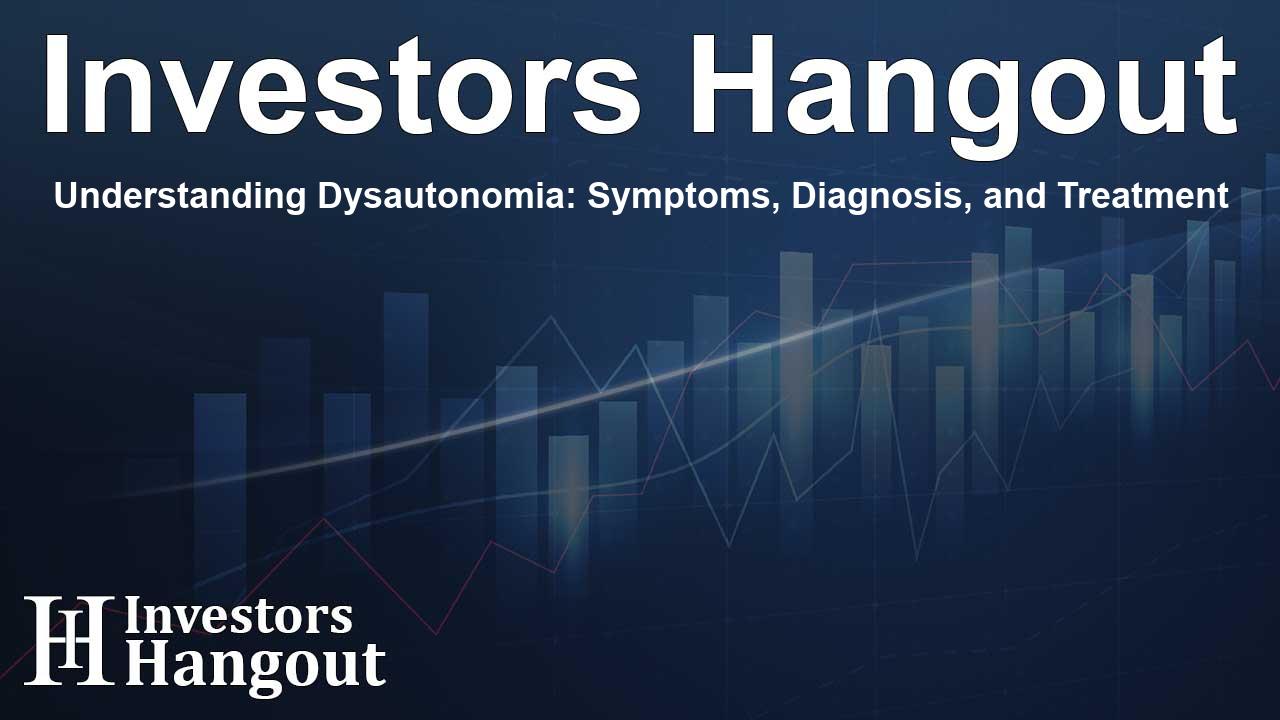Understanding Dysautonomia: Symptoms, Diagnosis, and Treatment

What is Dysautonomia?
Dysautonomia is a term that refers to a collection of disorders impacting the autonomic nervous system, which controls automatic bodily functions such as heartbeat and digestion. Unfortunately, many people suffer from this often overlooked condition without a clear diagnosis. Symptoms can be subtle and vary from person to person, making it a challenging condition to identify.
Recognizing the Symptoms
Individuals experiencing dysautonomia may encounter a range of symptoms that seem unrelated. They often include:
Cardiovascular Issues
Common cardiovascular symptoms comprise heart palpitations, a racing heartbeat, and chest pain. These symptoms can cause concern due to their intensity and unpredictable nature.
Orthostatic Challenges
People with dysautonomia may feel dizziness or lightheadedness when standing up, sometimes leading to fainting spells. This can significantly impact daily activities and quality of life.
Neurological Effects
Neurological symptoms can involve brain fog, trouble concentrating, and relentless fatigue. These manifestations can hinder a person’s ability to perform daily tasks and engage socially.
Digestive Distress
Digestive symptoms such as nausea, abdominal pain, and irregular bowel movements are also prevalent among dysautonomia sufferers. These issues can lead to additional complications and discomfort.
Additional Symptoms
Interestingly, dysautonomia can also cause complications like sleep disorders, mood fluctuations like anxiety and depression, exercise intolerance, and issues with temperature regulation. Patients may also notice unusual changes in skin color, and muscle or joint pain.
Challenges in Diagnosis
Diagnosing dysautonomia can be complex. Many individuals see various specialists for specific symptoms without recognizing they share a common cause. This situation can lead to frustration for both patients and healthcare providers.
Dr. Nicholas Schmidlkofer, a chiropractic neurologist, emphasizes that the scattered nature of symptoms often leads to fragmented care. Thus, it’s vital for patients to seek out specialists who understand the intricacies of dysautonomia and can connect symptoms effectively.
When to Seek Guidance from Specialists
Patients should consider seeking specialized evaluation if they notice several of the following signs:
- Multiple symptoms from the above categories that worsen upon standing.
- Previous diagnoses of conditions like chronic fatigue syndrome or fibromyalgia without effective treatments.
- Symptom onset or exacerbation following significant stress, illness, or injury.
In severe cases, individuals may find themselves bedridden and unable to transition from sitting or lying down due to debilitating symptoms. However, with the right diagnosis and treatment, significant improvements can be achieved.
Advanced Diagnostic and Treatment Approaches
The Neurologic Wellness Institute has implemented specialized evaluation and treatment protocols specifically designed for dysautonomia. Their method includes advanced autonomic testing and functional tilt table testing, which continuously monitors heart rate and blood pressure to identify the specific type of dysautonomia.
During a detailed initial evaluation lasting approximately three hours, healthcare providers develop customized treatment strategies. These may involve neuroplasticity-based therapies, specific neurological and physical exercises, photobiomodulation, non-invasive cranial nerve stimulation, neurofeedback, and lifestyle guidance.
Expert Availability for Media Interviews
Throughout Dysautonomia Awareness Month, specialists at The Neurologic Wellness Institute, including Dr. George Michalopoulos, Dr. Michael Drzewiecki, Dr. David Traster, and Dr. Nick Schmidlkofer, are available for media interviews. They can discuss recognizing the symptoms of dysautonomia, understanding its frequent misdiagnosis, the latest advances in treatment approaches, and insights from patient success stories.
Frequently Asked Questions
What causes dysautonomia?
Dysautonomia can stem from various causes, including genetic factors, infections, autoimmune diseases, and physical or emotional stressors.
Is dysautonomia a common condition?
While dysautonomia is becoming more recognized, many people remain undiagnosed, which contributes to a lack of awareness about its prevalence.
How is dysautonomia treated?
Treatment often involves a combination of lifestyle changes, tailored therapies, and in some cases, medication, focusing on improving the patient’s overall quality of life.
Can dysautonomia be cured?
There is currently no cure for dysautonomia, but appropriate treatment can help manage symptoms and improve the quality of life for many affected individuals.
How can I find a specialist for dysautonomia?
Look for neurologists or clinics specializing in dysautonomia and related disorders, as they possess the knowledge and resources to provide appropriate care.
About The Author
Contact Kelly Martin privately here. Or send an email with ATTN: Kelly Martin as the subject to contact@investorshangout.com.
About Investors Hangout
Investors Hangout is a leading online stock forum for financial discussion and learning, offering a wide range of free tools and resources. It draws in traders of all levels, who exchange market knowledge, investigate trading tactics, and keep an eye on industry developments in real time. Featuring financial articles, stock message boards, quotes, charts, company profiles, and live news updates. Through cooperative learning and a wealth of informational resources, it helps users from novices creating their first portfolios to experts honing their techniques. Join Investors Hangout today: https://investorshangout.com/
The content of this article is based on factual, publicly available information and does not represent legal, financial, or investment advice. Investors Hangout does not offer financial advice, and the author is not a licensed financial advisor. Consult a qualified advisor before making any financial or investment decisions based on this article. This article should not be considered advice to purchase, sell, or hold any securities or other investments. If any of the material provided here is inaccurate, please contact us for corrections.
